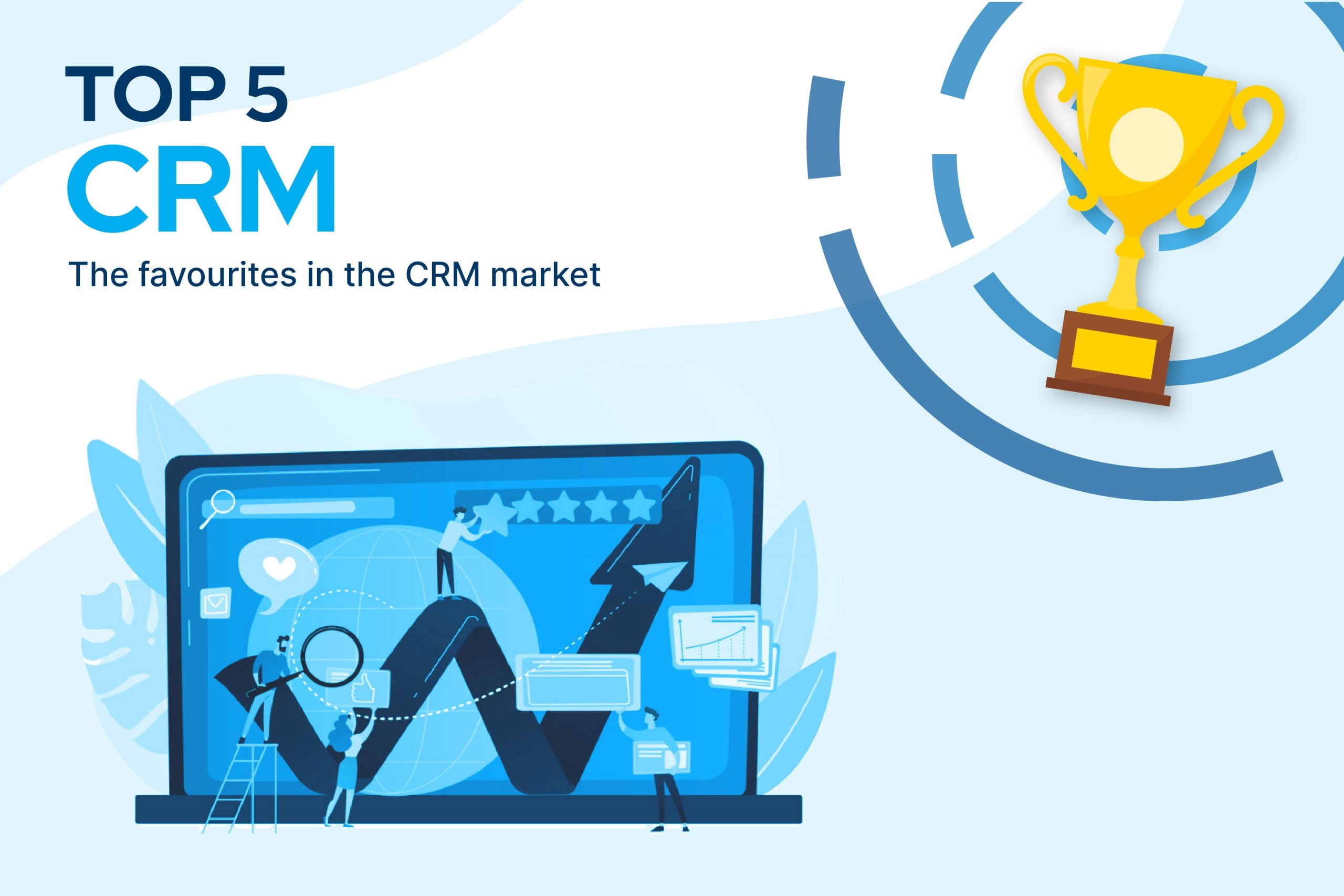B2B marketing automation, especially using tools such as Pardot, efficiently integrates different areas of a company's business while ensuring efficiency and effectiveness. In the following article, we will provide an introduction to B2B marketing automation using Pardot, discussing the functionalities and benefits of successfully implementing this platform.
What is Pardot?
Pardot is an advanced online marketing automation platform developed by Salesforce. It is mainly designed for companies operating in the B2B business model. It offers a range of features and tools designed to help companies generate and track lead activity, personalize communication content, and integrate tightly with their customer relationship management system - so implementing Pardot can significantly improve the effectiveness of marketing and sales campaigns and increase conversion rates.
How does automation with Pardot work?
Pardot marketing automation offers the creation of automated marketing strands that respond to lead interactions. A description of the entire process about how this automation works can be found below:
- Collecting customer data - this process begins collecting data on leads through various interactions (website visits, email views, clicking on links, filling out forms).
- Segmentation of leads - marketing streams are created, covering different stages of the sales funnel, and content is personalized based on them.
- Lead Scoring - this stage awards points to leads (lead scoring) based on their activity and engagement to determine which leads are most promising and ready to contact the sales team.
- Lead nudging - that is, creating automated marketing nudges, which are a sequence of steps and actions tailored to the behavior of leads. Threading leads allows you to gradually build relationships and deliver value through relevant content.
- Automating email campaigns - that is, creating and sending automated email campaigns in response to specific actions of leads (welcome emails reminds about products, or next steps in streams).
- Integration with Salesforce - Pardot's integration with Salesforce CRM, will allow consistent management of leads and customer data between the two platforms.
- Personalization of content - tailoring content to specific segments increases the effectiveness of marketing efforts.
- Analytics and reporting - Pardot provides tools to analyze the results of marketing efforts, allowing you to monitor metrics such as email opens, conversions, lead scoring.
- A/B testing - A/B tests are performed to compare the effectiveness of different variants of content, activities or stages of the stream.
- Campaign optimization - based on the analysis of the results, you can adjust the strategy and optimize activities to achieve better results.
After automation, it remains to monitor the activity of leads and analyze the results of the effectiveness of marketing strands and campaigns.
Salesforce Pardot Cockpit
The Salesforce Pardot dashboard is a central place where users can monitor, analyze and manage various aspects of their marketing automation efforts. The dashboard provides integrated tools that help marketing teams track campaign performance, manage leads and make informed decisions. A sample set of metrics and data that can be accessed in the Salesforce Pardot dashboard include, for example: lead scoring metrics, email marketing metrics, landing page metrics, lead generation metrics, social media metrics, campaign performance metrics, sales and marketing collaboration metrics, lead nurturing metrics, return on investment (ROI) metrics and website analytics.
The metrics listed above allow Pardot users to track campaign effectiveness, assess lead quality, analyze customer engagement and many other aspects related to marketing automation. Pardot's dashboard enables visualization of this data, making it easier to make quick decisions and adjust marketing strategy.
Salesforce Pardot functionalities
Salesforce Pardot offers a number of advanced features and capabilities that support effective B2B marketing automation. Among these, we can include: building landing pages, automating leads, creating and managing automated marketing streams, tracking user activity, designing and configuring online forms.
Building Landing Pages
The first important functionality is the ability to build landing pages, with full customization for marketing purposes. Pardot's landing pages are specifically designed to focus visitors' attention on a specific goal, such as collecting contact information or providing product information. In addition, integration with other Pardot functionalities, such as lead nurturing and lead scoring, allows for comprehensive and personalized management of the conversion process.
Lead automation
Another functionality is lead automation, which is the process of using marketing automation technologies and tools to automatically manage and guide potential customers through the sales funnel. The goal of lead automation is to effectively and personalize the engagement of potential customers, providing them with the right content at the right times and automatically tracking their activity. This process helps optimize marketing efforts, shorten the sales cycle and increase conversions.
Engagement Studio
Engagement Studio is a tool designed to create and manage automated marketing strands. It allows complex scheduling of interactions with leads, delivery of personalized content, and automation of activities to shorten the sales cycle and increase prospect engagement. This advanced feature enables salespeople to construct complex sales and lead nurturing strategies.
Tracking user activity
User activity tracking in Salesforce Pardot is the process of automatically monitoring the activities of potential leads on a website. This functionality allows salespeople to track customer behavior such as email viewing, link clicking, frequency of website visits, number of forms filled out and other online interactions. Analyzing these activities provides valuable data that can be used to personalize content, assess the potential of leads, and effectively segment and automate marketing activities.
Creating forms
The creation of online forms in Salesforce Pardot is used to collect information about potential customers. Such forms are then integrated into various places, such as websites and email campaigns. Salesforce Pardot's form creation functionalities enable form personalization, dynamic content adaptation depending on the recipient's data, and automation of actions related to the collected data. Form creation is a key element in the process of generating leads and collecting relevant marketing information.
Benefits of B2B marketing automation with Pardot
B2B marketing automation using Pardot brings a number of benefits that can significantly impact the effectiveness of marketing efforts and the sales results achieved. Here are some key benefits of B2B marketing automation using Pardot:
- Generating and nurturing leads,
- Personalization of communication,
- marketing stream automation,
- Precise segmentation of the database,
- Tracking customer behavior,
- Analysis of campaign effectiveness,
- CRM integration,
- email marketing automation,
- Easy testing and optimization of campaigns,
- Shortening the sales cycle.
Using B2B Pardot thus brings numerous benefits, allowing companies to effectively manage the marketing process, increase customer engagement and achieve better sales results. However, it makes sense to tailor the benefits of automation to a company's specific needs and goals.
Pardot - how much does it cost?
The cost of using Pardot depends on a number of factors, such as the number of potential users, the scope of functionality, the size of the database and integration with other Salesforce products. Pardot offers a variety of pricing plans, allowing companies to tailor the service to their individual requirements and budgets. For accurate cost information, it is best to contact your Salesforce partner directly to tailor the offer to your company's specific needs and conditions.
How long does it take to implement?
The time to implement B2B marketing automation with Pardot can vary and depends on several factors, such as the complexity of the marketing strategy, the size of the company, the customization of the platform (whether to use a ready-made template or whether the offer is to be personalized), user training, third-party integrations, and the company's readiness for implementation. Depending on the above factors, Pardot implementation can take from a few weeks to several months. The key is to carefully plan the implementation process, identify goals and priorities, and work with an experienced Pardot partner or consultant, which can make the entire process faster and easier.
Summary
In conclusion, B2B Pardot marketing automation can bring many benefits to a company, and its functionalities can improve marketing and sales activities. However, for this to happen, Salesforce Pardot needs to be well integrated with the company's systems. It is important to select the right functionalities that will be of real use to marketers.



